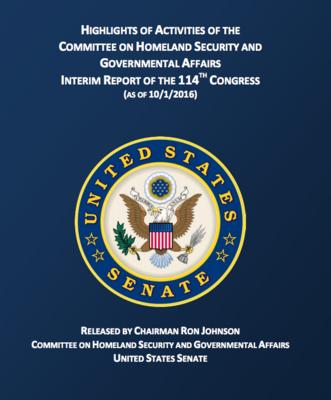Despite a $100 billion investment in strengthening the U.S.-Mexico border, there are vast areas in the southwest where 95 percent of illegal immigrants and drugs are entering without a single U.S. official noticing, according to a new Senate report.
“Our borders are unsecure,” said the Senate Homeland Security and Governmental Affairs report from Chairman Sen. Ron Johnson, Wisconsin Republican, who pushed through border reforms and is calling for more.
The report is a sweeping review of the committee’s actions and findings this year, and it portrays a border in crisis.

From the cover of the new report from Sen. Ron Johnson.
A key problem is the freedom illegals still have to pass through despite years of spending to build a wall and install detections.
“Despite spending more than $100 billion over the last decade to fund security measures along the borders, our borders remain unsecure.6 Interdiction rates on the border are below 55 percent, and as low as 30 to 40 percent in some areas. In unfenced areas — approximately two-thirds of the southwest border — interdiction rates may be as low as 5 percent,” said the report released Thursday.
Just last month, Johnson revealed that 15,000 illegals were apprehended on the southern border, a doubling of those caught in 2014 when illegal immigration hit its peak. In a letter to the Department of Homeland Security demanding action, Johnson said, “Despite the shocking nature of this growing crisis, the administration does not seem to be taking it seriously.”
With such freedom to pass into the United States, drugs are also a major issue, as is the country’s demand and desire for them.
Johnson’s report portrayed a border where drugs pass through virtually undetected. He said that the U.S. Coast Guard does a better job of drug interdiction, but the success rate is still very low.
“America’s insatiable demand for drugs, coupled with drug smugglers’ insatiable demand for profits, is a driving factor of the unsecure border. A former drug czar told the committee that the overall interdiction rate of drugs coming across our land borders is estimated between 5 to 10 percent. Similarly, the Coast Guard is only able to target approximately 30 percent of the illegal drugs it is aware of, resulting in the interdiction of only 11 to 18 percent of the maritime known drug flow toward the United States,” said the committee’s report.
Paul Bedard, the Washington Examiner’s “Washington Secrets” columnist, can be contacted at [email protected]

